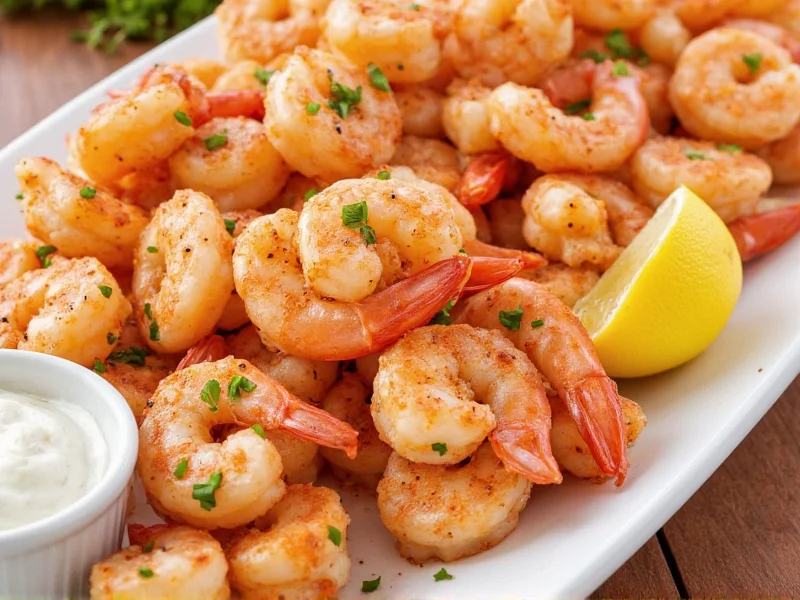Old Bay seasoning and shrimp form a classic flavor pairing that's beloved along the East Coast and beyond. This versatile Chesapeake Bay spice blend enhances the natural sweetness of shrimp without overpowering it. Whether you're preparing a quick weeknight dinner or entertaining guests, understanding the proper Old Bay to shrimp ratio and cooking technique makes all the difference between good and exceptional results.
Why This Old Bay Shrimp Recipe Works
Old Bay's distinctive blend of celery salt, paprika, and black pepper complements shrimp's delicate flavor profile. The key to success lies in proper seasoning application and precise cooking time. Many home cooks make the mistake of either under-seasoning or overcooking their shrimp, resulting in bland or rubbery seafood. This tested recipe solves both problems with specific measurements and timing.
Essential Components of Perfect Old Bay Shrimp
| Component | Key Detail | Why It Matters |
|---|---|---|
| Old Bay Ratio | 1 tbsp per 4 oz shrimp | Prevents overpowering the shrimp's natural flavor |
| Cooking Method | Sauté in butter | Creates flavorful crust while keeping shrimp tender |
| Cooking Time | 2-3 minutes per side | Ensures perfect texture without rubberiness |
| Shrimp Size | 16/20 or 21/25 count | Ideal balance of flavor absorption and cooking control |
Classic Old Bay Shrimp Recipe
This straightforward preparation yields consistently delicious results. The recipe scales easily for any serving size and works with both fresh and properly thawed frozen shrimp.
Ingredients
- 1 pound raw shrimp (16/20 or 21/25 count), peeled and deveined
- 2 tablespoons Old Bay seasoning (divided)
- 2 tablespoons unsalted butter
- 1 tablespoon olive oil
- 2 cloves garlic, minced
- 1 lemon, cut into wedges
- Salt to taste (optional - Old Bay contains salt)
Step-by-Step Instructions
- Pat shrimp completely dry with paper towels - this critical step ensures proper searing
- Toss shrimp in a bowl with 1½ tablespoons Old Bay seasoning
- Heat butter and olive oil in a large skillet over medium-high heat until butter foams
- Add minced garlic and sauté for 30 seconds until fragrant
- Add seasoned shrimp in a single layer without crowding the pan
- Cook for 2-3 minutes per side until shrimp turn opaque and develop light golden edges
- Remove from heat and immediately toss with remaining ½ tablespoon Old Bay
- Serve immediately with lemon wedges for squeezing
Variations for Different Cooking Methods
While the stovetop method delivers the best flavor development, these adaptations work well for alternative cooking preferences:
| Cooking Method | Adjustments | Cooking Time |
|---|---|---|
| Grilled Shrimp | Thread onto skewers after seasoning; add 1 tbsp olive oil | 2-3 minutes per side over medium-high heat |
| Boiled Shrimp | Add 3 tbsp Old Bay to 2 quarts boiling water with 1 lemon | 2 minutes in simmering water |
| Air Fryer | Toss with 1 tbsp melted butter before seasoning | 8-10 minutes at 400°F, shaking basket once |
| Baked Shrimp | Arrange on parchment-lined baking sheet; dot with butter | 8-10 minutes at 425°F |
Pro Tips for Perfect Old Bay Shrimp Every Time
- Chill before cooking: Refrigerate seasoned shrimp for 15-30 minutes to allow flavors to penetrate
- Avoid overcrowding: Cook in batches if necessary to maintain proper searing temperature
- Don't overcook: Shrimp continue cooking after removal from heat - pull them just before they reach desired doneness
- Freshness matters: Use the freshest shrimp possible; they should smell clean and oceanic, not fishy
- Size consistency: Select shrimp of uniform size for even cooking
Serving Suggestions and Pairings
Old Bay shrimp pairs beautifully with several classic sides. For a complete meal, consider these complementary options:
- Creamy coleslaw balances the spice with cool freshness
- Corn on the cob enhances the coastal flavor profile
- Rice pilaf or crusty bread soaks up delicious pan juices
- Light green salad with lemon vinaigrette provides contrast
For entertaining, serve Old Bay shrimp as an appetizer with cocktail sauce or over a bed of mixed greens for an elegant shrimp salad. Leftovers (if any) make excellent additions to seafood pasta dishes or shrimp tacos the next day.
Common Mistakes to Avoid
Even simple recipes can go wrong without proper technique. Steer clear of these common pitfalls when preparing Old Bay shrimp:
- Using pre-cooked shrimp: Already cooked shrimp becomes tough when reheated with seasoning
- Adding seasoning to wet shrimp: Moisture prevents proper adhesion and causes steaming instead of searing
- Over-marinating: Acidic ingredients can start to cook the shrimp (ceviche-style)
- Using low heat: Results in boiled texture rather than a flavorful sear
- Adding Old Bay too early: Paprika can burn if added before shrimp hit the pan











 浙公网安备
33010002000092号
浙公网安备
33010002000092号 浙B2-20120091-4
浙B2-20120091-4